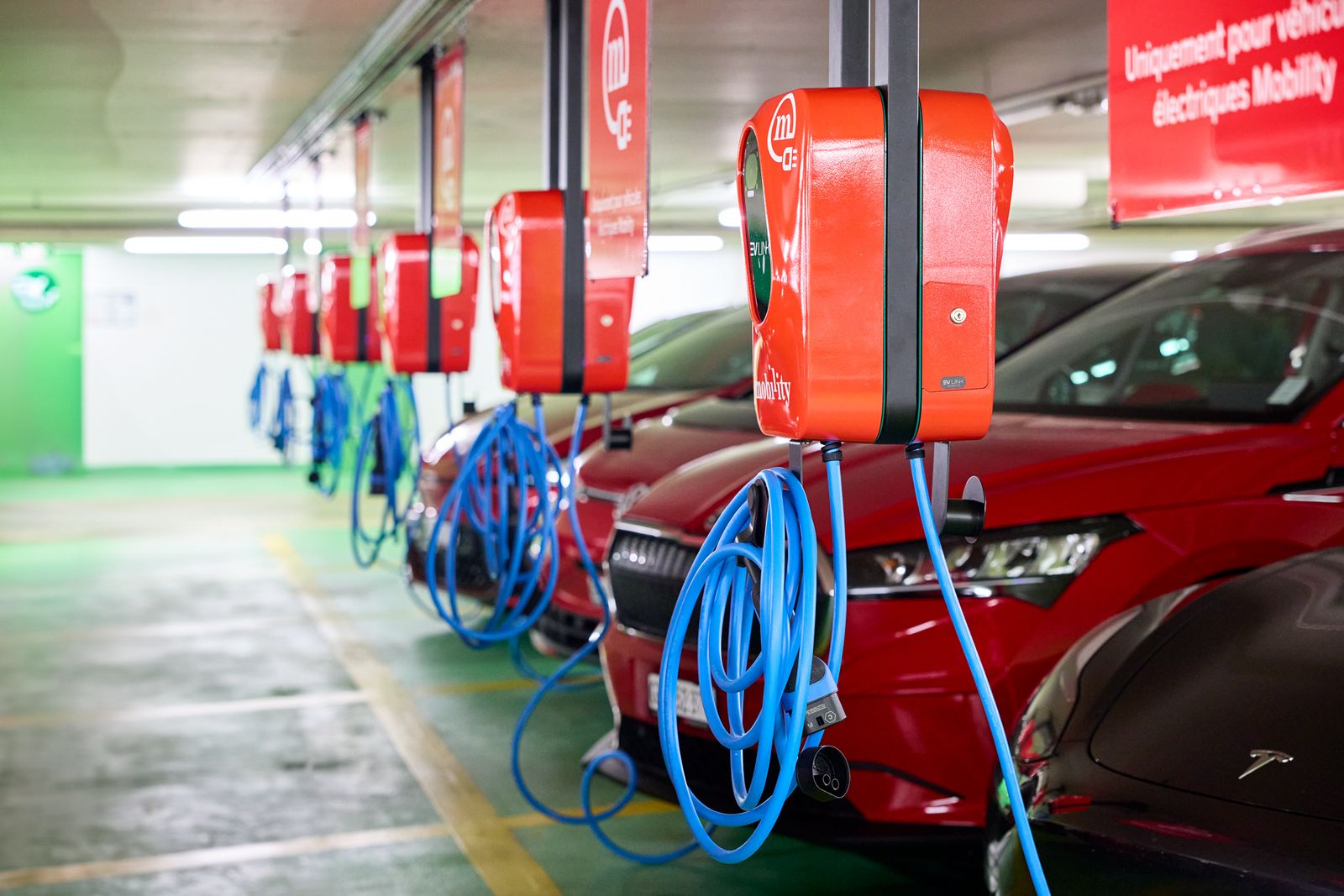Damien Zuber, why did Fondation des Parkings decide to work with Mobility?
The Foundation’s an autonomous public institution that reports to Canton Geneva; the latter has targets for reducing private motorised traffic and greenhouse gas emissions – a vision that’s shared by the Foundation. Shared mobility leads to fewer vehicles, a better quality of life and a cleaner environment. We also want to promote the use of Swiss renewable energies for mobility. The Mobility electric cars in our car parks are charged with locally produced electricity sourced exclusively from renewables.
Mobility is delighted with the collaboration with your Foundation, which has invested in facilitating this fleet at Geneva’s main railway station. Why are you so committed to this project?
We want to be able to offer car sharing in our car parks, but we lack the know-how to develop it ourselves. So working with Mobility is a huge plus – a real win-win partnership. We’ve invested in the electrical infrastructure that Mobility needs by conducting the energy to the vehicle zone, while Mobility provides the charge points. If Mobility keeps up its momentum, we’ll have 200 electric car-sharing vehicles in our facilities by 2027.

Mobility’s aiming for a fully electric fleet by 2030. What are your Foundation’s objectives in this area?
In addition to Mobility’s offering, in the medium term, we’re seeking to provide 1’000 electric vehicle charge points across our 30’000 off-street parking spaces. The long-term plan is to equip 10 percent of the latter with charge points.
Will outdoor parking spaces also be so equipped?
This is the responsibility of the local authorities, not the Foundation. They have a policy of discouraging on-street parking. It means that charge points will mainly be located in multi-storey car parks and filling stations.
We’re sitting in a car-sharing vehicle located by a major railway station, which itself is at the heart of a public transport network. What is the Fondation des Parkings’ vision for the modal shift from individual transport to public transport?
We want to be part of the collective effort to halve private motorised transport journeys and greenhouse gas emissions, and are doing everything that’s needed to get us closer to these objectives. The idea is to keep cars on the outskirts of the city to shorten journeys by car/motorcycle and lengthen those made using sustainable means, prioritised in the order: walking, cycling, public transport. We’re going to install cycle parking in this Cornavin car park to encourage soft mobility to the railway station. We’ll soon be providing 2’500 places on level -1, where cyclists will also have access to charge points for their electric bikes. We see it as a positive move to be converting spaces that used to be for private cars into car-sharing, bicycle and motorcycle spaces.
So car parks are becoming multimodal interchanges?
Yes, we really want them to be this kind of hub. This one also contains lots of car hire vehicles, although we want services to remain linked to parking. For example, car cleaning is not part of our vision, partly out of consideration for those doing these jobs, but also because we believe that a car park shouldn’t require heating or air conditioning. We’re pursuing this strategy because our view is that every off-street parking space frees up public space. And that additional space is very valuable in terms of quality of life. As part of this vision, we’re keen to promote underground parking for the city’s residents, which also has the effect of freeing up the public realm.

What makes Geneva so valuable and unique
Space for parking is a rare and expensive commodity. In the course of electrification, the issue is growing in relevance – for Mobility, too. This is because its entire fleet (of some 3’000 cars) is due to be electric by 2030. The biggest challenge on the road to zero-emission car sharing: deploying the charging infrastructure. As a rule, Mobility is the tenant of its locations, so it’s not unusual for it to take months to commission an e‑parking space. On top of that, the organisational, man-hour and, in particular, financial commitments are considerable. Click on this link to find out why it takes a good six months for an e-parking space to come on stream.
There’s a reason why Mobility Cooperative’s largest fleet of electric vehicles is stationed in Geneva. The endeavour would never have come about were it not for Fondation des Parkings. Thanks to the proactive collaboration, Mobility has been able to rely on a strong partner in terms of implementation and financing. Mobility has also been able to equip the new e-parking spaces with its own charge stations – an advantage for car sharing operations, not least because of the charge data they provide.
Of the 26 electrified parking spaces in Geneva, 22 are currently home to electric cars; the four fossil fuel-powered cars will be replaced by battery-powered ones as soon as possible. Geneva will then be the first fully electric facility of this magnitude. “We’re increasing the proportion of electric vehicles in our Geneva fleet by a significant margin – up from three percent at the end of 2022 to 25 percent by the end of 2023. Our commitment to clean mobility is stronger than ever,” says Mobility spokesperson Stéphanie Gonzalez. Ideally, Geneva will serve as a model for other projects and cities as Mobility drives the pace towards an emission-free fleet by 2030.
Photos: Glenn Michel
Your comments will be posted within 24 hours.
![[Translate to English:]](/fileadmin/_processed_/0/0/csm_mobility-carsharing-genf-cornavin-elektroparkplatz_83bba8095f.jpg)

Comments
Thank you for your message. We are delighted if we can make you happy.